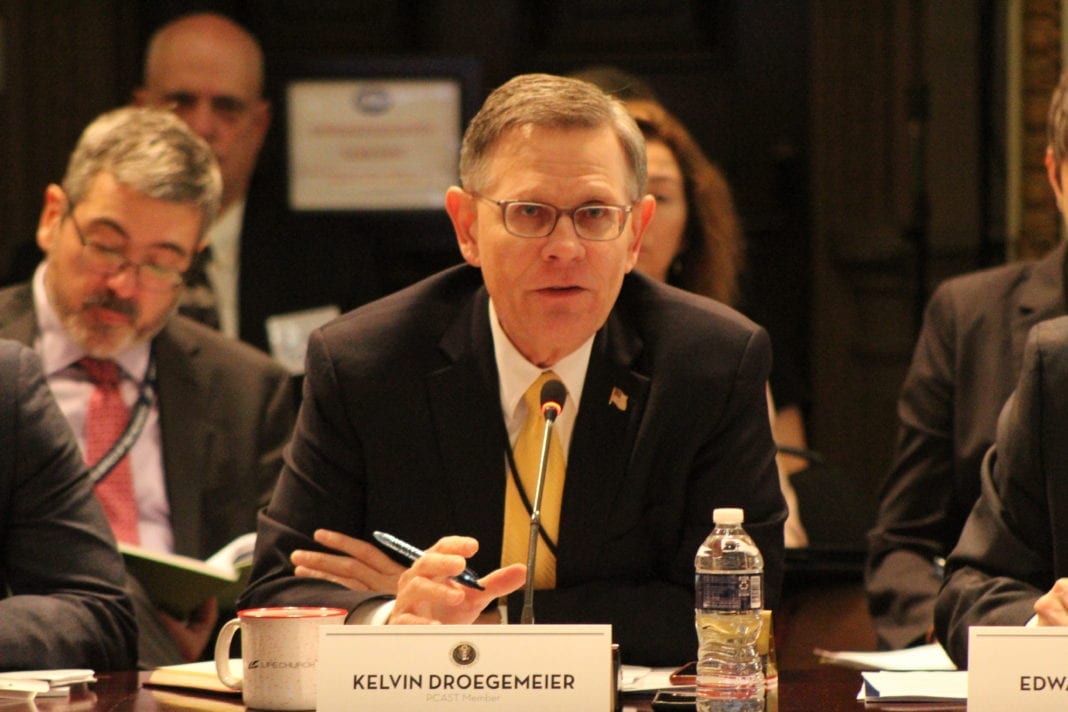A fascination with storms and a love of football led Kelvin Droegemeier to a 35-year career at the University of Oklahoma … and later to one of the most prominent jobs a scientist can hold in the U.S.
Droegemeier took the position of the director of the White House Office of Science and Technology Policy in April 2020 after an appointment by President Donald Trump.
“I sort of have to pinch myself every now and say, ‘Am I really here or am I going to wake up and find this is all a dream?’” he says. “I’m extraordinarily blessed and feel like I’ve been called to this position. It’s a privilege of a lifetime.”
Droegemeier is the president’s science advisor and leads OSTP in its coordination of any science and technology initiatives, policies, plans and programs. He also chairs the National Science and Technology Council and co-chairs the President’s Council of Advisors on Science and Technology.
“We have about 90 different policy activities going on at any given time, from oceans science tech to artificial intelligence and so on,” Droegemeier explains. “It is a very lively, intellectually stimulating, and cool place to be.”
It was easy for a young Droegemeier, growing up in Kansas – part of ‘Tornado Alley’ – to become fascinated with the weather. It only seemed natural that he would want to study meteorology, so he found a university not too far from home that was the right fit. (It helped that he was already a big fan of the Sooners.)
Moving on to the University of Illinois at Urbana-Champaign for more education, it wasn’t until 1985, after he completed his doctoral program, that Droegemeier applied to work at several universities. Still, he knew there was only one place to call home.
“Going back [to OU] just five years after I’d left as an undergraduate was weird in a way, but it was neat that all the [people] who were my professors as a student were now my colleagues as a faculty member,” he says. “The transition was easy, and I knew I wanted to be part of growing that program.”
Droegemeier brought back his experience of numerical modeling of severe storms and high-performance computing. From his expertise, he was he able to get grants and build labs for his students.
“It was fun to help build a program and [bring] value in areas that didn’t already exist,” says Droegemeier, who is still a faculty member at OU, but is on a leave of absence while in Washington, D.C.
Not long after starting a lucrative career, Droegemeier unknowingly began preparing for his role in the White House. He co-founded the National Science Foundation Science and Technology Center for the Analysis and Prediction of Storms in 1989 and served as its director for more than a decade. He also harbors a long list of accolades, awards and countless contributions to science that propelled him to his appointment.
“My training as a scientist helped me in terms of how I think about a problem, and it also gave me the big picture view of why science is important and how to articulate to people who, for example, are not meteorologists, how the weather works,” he explains. “Here at the White House, there are so many different topics. I try to find examples that I can talk about and put into a framework that they’re familiar with.”
While he’s enjoying his post in Washington, Droegemeier still misses a few things about Oklahoma: being at home, going to his church, riding his Harley, eating Oklahoma barbecue, drinking COOP Ale Works’ F5 beer, and, of course, the people – especially his wife of 37 years.


























